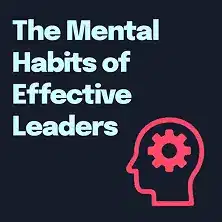What is
Leadership and Self-Deception by The Arbinger Institute about?
Leadership and Self-Deception explores how self-deception—viewing others as obstacles while inflating one’s own virtues—undermines personal and professional relationships. The book introduces the “in the box” metaphor, where individuals act selfishly, and contrasts it with “out of the box” self-awareness, which fosters collaboration and empathy. Through narrative examples, it reveals how self-betrayal perpetuates dysfunctional behavior in teams and organizations.
Who should read
Leadership and Self-Deception?
This book is ideal for leaders, managers, and anyone seeking to improve workplace dynamics or personal relationships. It’s particularly valuable for those struggling with team conflicts, communication breakdowns, or fostering accountability. The fourth edition’s updated examples and discussion guides make it relevant for diverse, modern audiences.
Is
Leadership and Self-Deception worth reading?
Yes—the book offers actionable insights into overcoming self-deception, a root cause of leadership failures. With over 3 million copies sold, its frameworks help readers shift from blame-driven mindsets to collaborative problem-solving. The fourth edition’s practical tools and relatable protagonists enhance its applicability to contemporary challenges.
What does “being in the box” mean in
Leadership and Self-Deception?
“Being in the box” refers to a state of self-deception where individuals prioritize their own needs while dismissing others’ humanity. This mindset distorts reality, leading to justification of poor behavior and strained relationships. Leaders “in the box” often use coercion, undermining team trust and productivity.
How does self-deception affect leadership effectiveness?
Self-deception blinds leaders to their own flaws, causing them to overestimate their virtues and misinterpret others’ intentions. This creates toxic cycles of blame, resistance, and disengagement. By contrast, “out of the box” leaders foster trust by acknowledging shared goals and treating others as equals.
What are the key takeaways from
Leadership and Self-Deception?
- Self-awareness is foundational to authentic leadership.
- Treating others as people—not obstacles—unlocks collaboration.
- Self-betrayal (ignoring instincts to help others) fuels destructive behaviors.
- Breaking free from “the box” requires humility and accountability.
How can
Leadership and Self-Deception improve workplace relationships?
The book provides tools to identify and address self-deception, such as reframing conflicts as shared challenges. By prioritizing others’ needs and fostering open dialogue, teams reduce defensiveness and improve problem-solving. Updated case studies in the fourth edition illustrate these principles in hybrid and diverse work environments.
What updates are included in the fourth edition of
Leadership and Self-Deception?
The fourth edition features a younger, female protagonist, modernized workplace examples, and removal of outdated content. New additions include individual/group study guides, practical application steps, and expanded guidance for organizational implementation. These changes broaden the book’s relevance across demographics.
What is “self-betrayal” in
Leadership and Self-Deception?
Self-betrayal occurs when individuals ignore their instinct to assist others, choosing selfishness instead. This initial act distorts their perception, leading to justification of harmful behaviors. For example, a manager blaming an underperforming employee rather than addressing systemic issues exemplifies self-betrayal.
How does
Leadership and Self-Deception relate to personal growth?
The book emphasizes that leadership starts with self-examination. By recognizing self-deception, individuals repair relationships, build empathy, and align actions with values. Readers learn to replace blame with curiosity, fostering resilience in both personal and professional contexts.

















